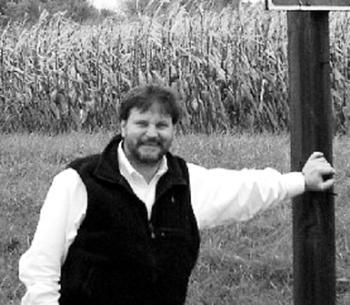
Fifteen Questions for Stephen A. Mitchell
Stephen A. Mitchell is Harvard’s resident expert on witchcraft and the supernatural. The former master of Eliot House and current head of the Folklore and Mythology concentration, he’s equally comfortable teaching classes on witchcraft, expounding on Vikings and bashing Hillary Clinton.
1. Where does the idea of witchcraft originate?
Many cultures possess a cultural category we would describe as witchcraft. Typically these figures embody characteristics that break taboos about harmony, sex, children and other things valued by the culture. In western Europe, witchcraft of this sort was further shaped by Christian theology and ended in the construction of the witch we think of today.
2. Is the witches’ broom a phallic symbol?
Brooms were indeed associated with witches but not to the exclusion of other objects—churns, hayforks, farm animals and many other everyday objects were also supposedly ridden by witches to their gatherings. Brooms also sometimes had a protective function against witches. In Tyrolean tradition, for example, a broom placed against a door would bar a witch from moving through it. As to the question of the phallic symbol, yes, one can read it that way, I suppose, although some of the other objects (e.g., the churn) might be even better candidates. Certainly its presentation in well-known contexts, such as Dürer’s image of the witch on her way to Walpurgis, allows the broom to be interpreted in this way.
3. What is your favorite cinematic portrayal of witchcraft?
Without peer is Benjamin Christensen’s Häxan (1922). It is a brilliant portrayal of witchcraft. If you want something a bit more cult-like, a really interesting film is George Romero’s Season of the Witch (1972), which draws a straight line between the still nascent women’s movement and witch cults, as he portrays them.
4. How accurate is The Crucible?
Not especially, but then Miller has routinely expressed the view that he wasn’t looking to be an historian when he wrote it.
5. What is your favorite way to test if someone is a witch?
Today’s pagans are generally pretty straightforward about their views, Wiccans and other sorts of witches included. So, today, as opposed to 15 or 20 years ago, if I think it’s any of my business, I just ask.
6. How does one make a witches’ brew?
I haven’t a clue, but send the recipe if you get it.
7. Do you give anything to trick-or-treating kids on Halloween?
Nutrageous is our favorite Halloween treat for kids, but we live in a small, mainly rural town where all the trick-or-treating takes place around the town center, so most folks buy candy and drop it off at the police station for re-distribution through the families in the center.
8. What are your thoughts on Voodoo?
Voodoo has been actively misrepresented by Hollywood for generations. Real vodou is a form of loa (god, spirit) worship with roots in west Africa, mainly in the Yoruba culture, although with a degree of influences from elsewhere.
9. How many times have you seen The Witches of Eastwick?
Once, on video, but I think I fell asleep halfway through.
10. What is your favorite Halloween costume?
In the battle between commercial culture and folk culture, I favor home-made attempts, with cast-off clothing, burnt cork make-up and all the rest.
11. What is your favorite Halloween memory?
Spooky walks through old barns—our neighbors made them up when I was a kid, and, I’m happy to say, friends and neighbors in our town still set them up for the children. Oh, and when I was first House master, my then-5-year-old daughter helped decorate our residence for a Halloween open house, and she took enormous delight in the idea that what she was doing was going to scare the undergraduates. I think it really helped her get hold of her own fears about the holiday.
12. Why are witches such an integral part of Halloween?
Halloween was part of the traditional pre-Christian cycle of festivals in many different parts of Europe. The Church tried to tame it in a variety of ways, but the idea that it is a time when the veil between our world and the Otherworld is especially thin and the two can communicate persists. Witches were often accused of participating in sabbats on this date, and certainly modern witches have embraced the occasion as well.
13. Who would win in a fight, Frankenstein or The Wolf Man? Why?
Wolf Man hands down—it’s a ‘speed, fielding and pitching over hitting’ kind of thing.
14. Do you like scaring people? If so, what is your favorite method?
Not really, although my wife claims that she occasionally finds my political views a little frightening.
15. What scares you?
The junior senator from New York. And the senior senator from the Empire State (and don’t even get me started on the Massachusetts delegation in its entirety).


